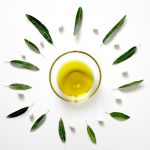Next time you make some guacamole, make sure to save the seed!
Though avocados are known best as the creamy main ingredient in guacamole, they are more than that.
The avocado is a tree native to Mexico and Central America, classified in the flowering plant family Lauraceae along with cinnamon, camphor and bay laurel. It is a tropical fruit with hard, dark green skin, soft, light green flesh and a large seed (stone/pit) inside. Avocados are not sweet and are sometimes eaten at the beginning of a meal.
Avocados (or avocado pears) are already popular with people across the globe for their health benefits. If you are among those fans of this exceptional fruit, you should know that almost 70% of the nutrient value of avocados is actually hidden in the seed. It has a greater number of antioxidant properties than all of the flesh inside the avocado.
But, that’s not all. Avocado seeds are swarming with health benefits you might not have known about:
Avocados seeds are packed with antioxidants
Amazing 70 percent of the antioxidants in an avocado are found in the seed, not in the flesh! Avocado seeds contain an antioxidant known as phenolic compound, which has anti-viral and antibacterial properties shown to alleviate pain from gastric ulcers.
Avocado seeds are also very high in flavonol, another antioxidant that has been shown to fight cancer. The main benefit of antioxidants in general is their ability to fight free radicals. Free radicals are believed to be one of the main reasons why people get sick, develop cancer, and age faster than they should. Studies on rats infected with cancer given avocado seed powder showed very promising results!
Avocado seeds are packed with easily dissolvable fiber: Avocado seeds contain 100% of fiber needed for a healthy body that is in accordance with the DRI (Daily Recommended Intake).This is extremely high amount of soluble fiber, which helps all aspects of digestion.
Swelling in the gastro intestinal tract is eased by the anti-inflammatory nature of avocado seeds. Constipation and diarrhea are also easily treated with avocado seeds. And adding more fiber to your diet is good for everything: from losing weight to lowering blood sugar.
Avocado seeds give a good boost to your immune system: Avocado seeds are rightfully classified as super food because they boost your immune system and keep you from contracting debilitating diseases. Antioxidants keep free radicals at bay and thus maintain your immune system potent. Avocado seeds seem to have a good anti-inflammatory ability for fighting arthritis and other joint malfunctions too.
Avocado seeds are heart-supportive: Though avocados are high in fat, most of the fat is heart-healthy monounsaturated fat. According to the Centers for Disease Control and Prevention (CDC), “avocados are loaded with nutrients such as dietary fiber, vitamin B6, vitamin C, vitamin E, potassium, magnesium, and folate. They’re also cholesterol and sodium free. Avocados contain 60 percent more potassium per ounce than bananas.”
The majority of avocados in the US come from California, followed by Florida. Two tablespoons of mashed California avocado or 1/5 (about 1 oz.) of a medium California avocado provide as little as 55 calories.
How to Use Avocado Seeds
Slice the avocado evenly down both sides, and split the avocado in half like you’d normally do to prepare it. Here’s the important part: don’t throw the seed away. Instead, save it in a plastic baggie.
Here’s how to use the seed the easiest way: crush the seed with a meat tenderizer (or just a hammer) into as fine of a pulp as you can. Take the pulp and add it to a blender with your favorite smoothie ingredients, and blend well. Avocados make an excellent addition to any drink mix, actually – even meal replacement and protein shakes.
You can start avocado seeds at your home
Avocado seeds may be started in a glass of water or in a moist, porous soil mixture. Either will work, but the soil method will provide faster results.
If the seed is started in water, insert 3 or 4 toothpicks in the seed about half way down the sides. Next, fill a small glass with water to the brim and place the seed in the glass, flat end down, so the toothpicks rest firmly on the brim.
The toothpicks should be supporting the seed so that the pointed half is out of the water and the bottom half is in the water. The sprouting tip will come out of the pointed end, so be sure the flat end is immersed in water. Place the glass on a sunny window sill or some other well lighted spot. Add water as needed to keep the bottom half of the seed wet at all times.
Source: Center For Disease Control and Prevention



